Wondering how visual, cognitive, and manual distractions affect your driving? In this guide, we’ll explore these three types of visual distraction and distracted driving that can jeopardize road safety. You’ll learn what each type entails and how they contribute to accidents. Stay with us to discover practical tips to stay focused behind the wheel.
Key Takeaways
Distracted driving includes visual, cognitive, and manual distractions, each posing serious risks to road safety.
Young drivers aged 15-20 are particularly susceptible to distracted driving behaviors, such as texting and eating, which significantly impair their focus.
Legal consequences for distracted driving can include fines, increased insurance rates, and severe charges such as reckless driving or vehicular manslaughter.
The Best Guide to Visual, Cognitive an Manual Distracted Driving
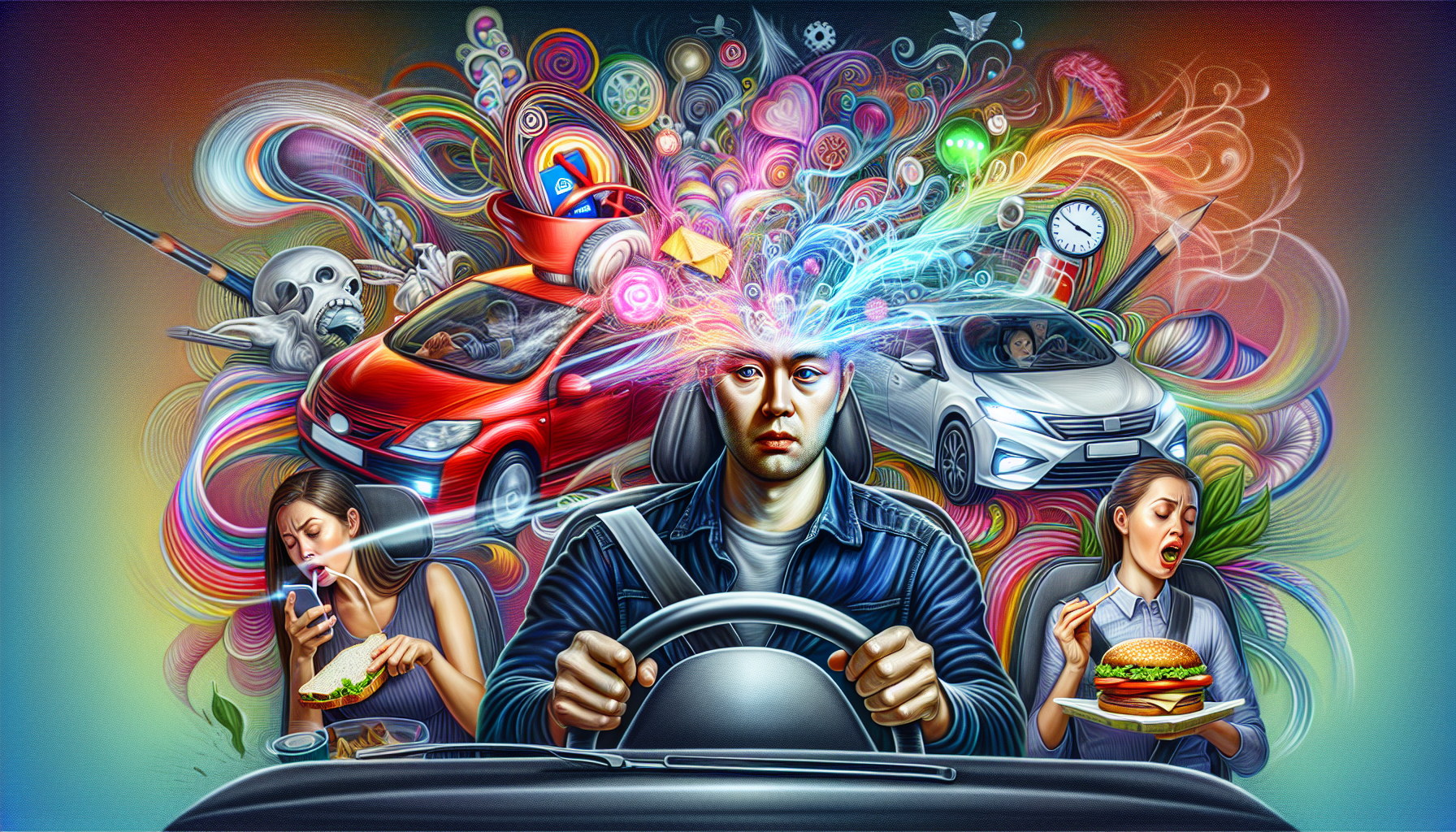
Distracted driving includes any activity that diverts attention from the road. This distraction can range from texting and talking to passengers to eating and adjusting the radio. Identifying various distractions aids in promoting road safety. The National Highway Traffic Safety Administration (NHTSA) stresses the importance of undivided attention while driving for road safety.
There are three main types of distracted driving: visual, a cognitive distraction, and a manual distraction. Visual distractions occur when a driver looks away from the road, leading to reduced attention. Cognitive distractions emerge when a driver’s mind wanders from the task of driving. Manual distractions involve any action that moves a driver’s hands away from the steering wheel. Knowing these distinctions allows drivers to identify risks to themselves and other road users.
Young drivers, particularly those aged 15-20, face a higher risk of engaging in distracted driving. Texting while driving, for example, can distract a driver's eyes for up to five seconds, which is equivalent to driving the length of a football field at high speed without looking at the road. Consuming food or beverages while driving can also divert attention and increase the likelihood of accidents.
Awareness of these distractions enables us to implement measures to remain focused and safe while driving.
Introduction
Distracted driving is a critical issue that impairs road safety and increases the risk of accidents. The allure of a text message, the convenience of a GPS, or eating while driving can have severe consequences of car accident. Drivers must comprehend the various distractions behind the wheel and their impact on driving safety.
The three categories of main types of distracted driving are:
Visual distractions: Occur when a driver looks away from the road, leading to reduced attention.
Cognitive distractions: Happen when a driver’s attention is diverted from the task of driving, often due to preoccupied thoughts.
Manual distractions: Occur when a driver removes one hand or both hands from the steering wheel, significantly impairing their ability to control the vehicle.
Addressing these distractions can substantially reduce car accident and risks and enhance road safety for all.
Understanding Distracted Driving
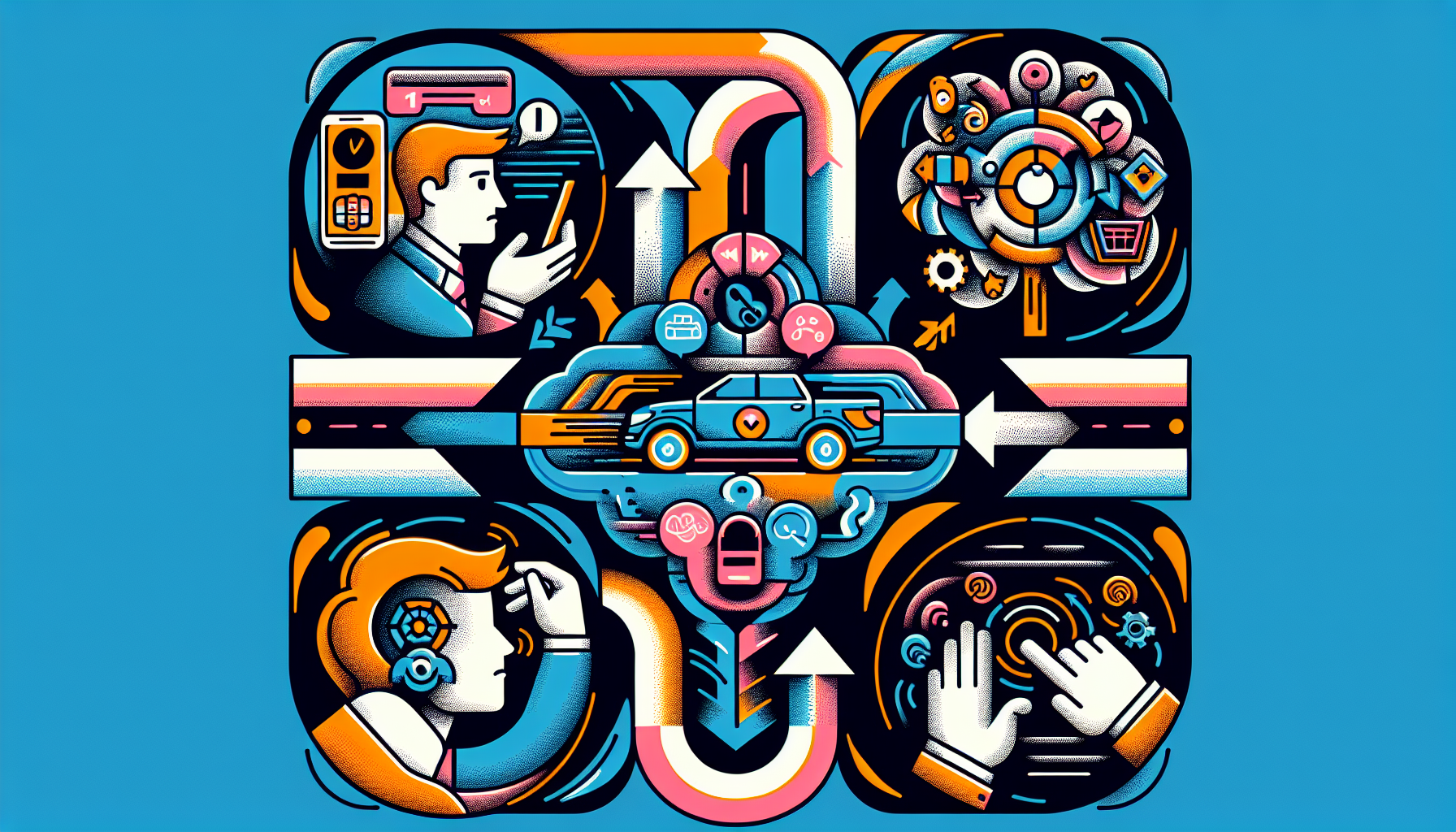
Distracted driving includes any activity that diverts attention from the road, including actions by a distracted driver. This broad definition encompasses a variety of actions that can take a driver’s focus away from driving, such as texting, eating, or adjusting the radio. Grasping these driving distractions is key to recognizing the risks they pose to oneself and others on the road.
The NHTSA emphasizes the need for full attention on driving to ensure safety on the road. Identifying various distractions aids in promoting road safety. The three main types of distracted driving are: visual distraction, cognitive distraction, and manual distractions. Visual distractions occur when a driver looks away from the road, leading to reduced attention. Cognitive distractions emerge when a driver’s mind wanders from the task of driving. Manual distractions occur when a driver’s hands are moved away from the steering wheel.
Distracted driving is a primary cause of accidents in California, as it diverts the attention necessary for safe driving. A distracted driving incident, such as consuming food or beverages while driving, can divert attention and increase the likelihood of accidents.
Young drivers, particularly those aged 15-20, face a higher risk of engaging in distracted driving. Awareness of these distractions helps us better prepare to avoid them and stay focused on the road.
Visual Distractions Explained
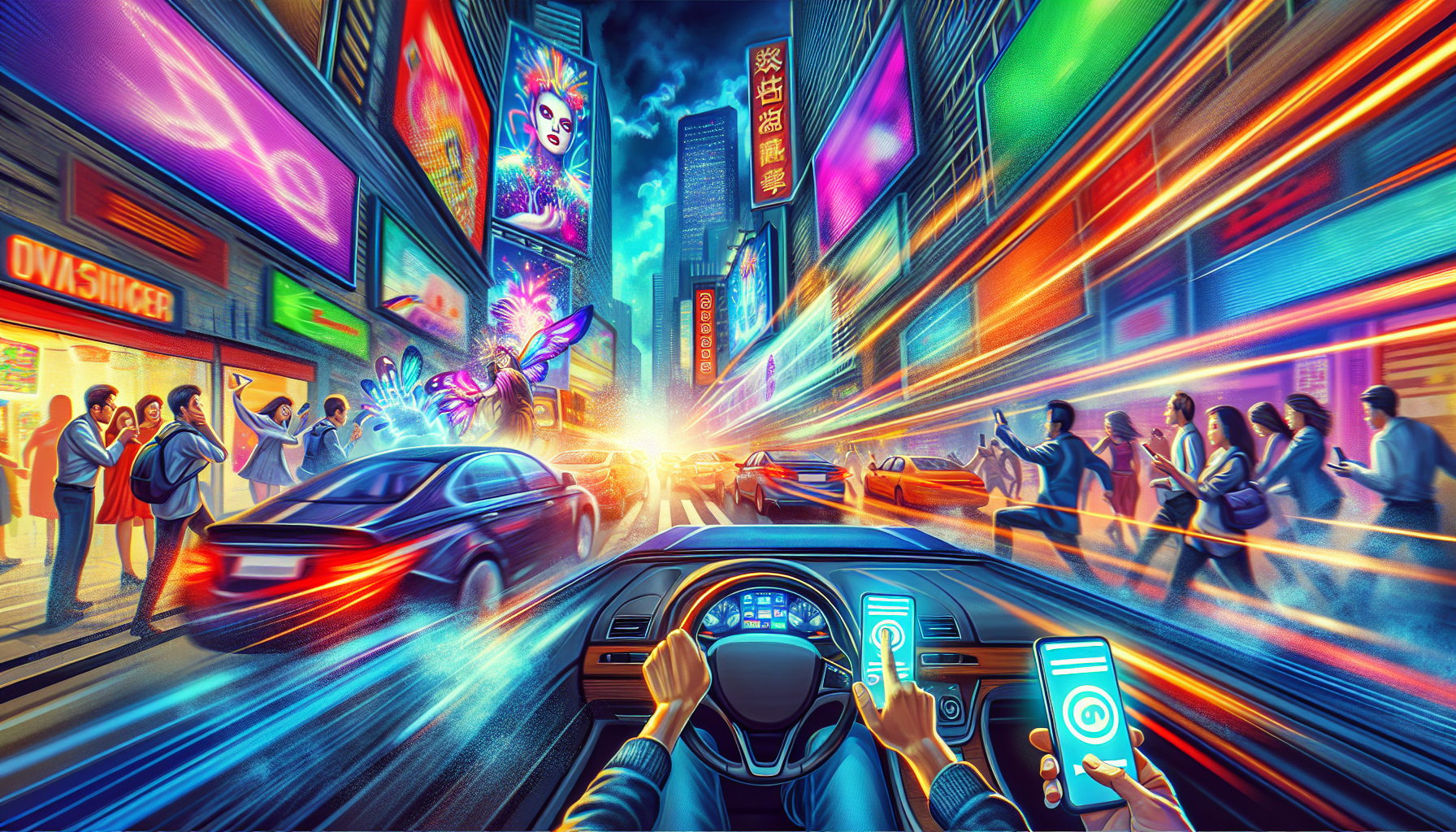
Visual distractions occur when a driver looks away from the road, leading to reduced attention. These distractions can be particularly dangerous because even a driver takes a brief glance away from the road can lead to a significant distracted driving incident afterwards. Activities such as texting, using a GPS, or eating can lead to distracted driving incidents. Any non-driving activity can become a distraction, increasing the likelihood of accidents.
Common visual distractions while driving include:
Reading text messages
Checking social media
Looking at GPS
Observing construction sites
Visual driving distractions
Recognizing these distractions is the first step in mitigating their risks.
Cell Phones and GPS Devices
Using a cell phone while driving is one of the most attention-diverting distractions. Whether it’s texting, checking social media, or using a GPS for directions, these actions take a driver’s eyes off the road and significantly increase the risk of a crash. Glancing at the GPS in the car causes visual distraction, diverting the driver’s attention from the road.
The use of electronic devices while driving is a common cause of both visual driving distractions and distracted driving incidents. Even hands-free devices can cause visual driving distractions if not used wisely. Minimizing the use of these devices while driving is essential for maintaining full attention on the road.
External Events
External events like roadside accidents or construction zones often cause drivers to lose focus. These external events can be just as distracting as any activity inside the vehicle. Slowing down to observe accidents or construction work can cause drivers to become less aware of surrounding traffic, leading to potential hazards.
Common examples of external events that can distract drivers include roadside billboards, other vehicles’ actions, and even scenic views. Awareness of these distractions helps drivers stay focused and avoid accidents caused by external distraction events.
Cognitive Distractions Explored
Cognitive distractions involve mental engagement intense conversation or other activities that takes focus away from driving. These distractions can severely impact a driver’s judgment and reaction times. Examples of cognitive distractions while driving include talking to passengers, experiencing road rage, and dealing with cognitive distraction, stress, or fatigue.
The brain has a limited capacity for processing multiple tasks simultaneously, which can hinder safe driving performance. When a driver’s mind is preoccupied with other thoughts, they may not notice potential hazards on the road, leading to dangerous situations.
Grasping cognitive distractions and mental distractions is necessary for maintaining full attention while driving.
Intense Conversations
Conversing with others, particularly in an intense manner, can significantly decrease a driver’s concentration. Many drivers commonly engage in intense conversations with passengers or on hands-free devices. These conversations can divert the driver’s attention away from the road, leading to potential hazards.
Drivers must be aware of how intense conversations impact driving performance. Keeping conversations light and avoiding mentally engaging topics during intense car conversation helps improve driving focus.
Daydreaming and Stress
Stress and daydreaming impair cognitive functions and delay reaction times. Daydreaming diverts focus from driving tasks, which can lead to dangerous situations. Both stress and daydreaming significantly contribute to slower reaction times that can increase the risk of accidents.
Being mindful of one’s mental state while driving is important. Taking steps to manage stress and staying focused on the road can help reduce the risk of accidents caused by cognitive and mental distractions.
Manual Distractions Detailed
Manual distractions involve any action that moves a driver’s hands away from the steering wheel. One key characteristic of manual distractions is taking one hand off the wheel. Additionally, it can involve taking both hands off the wheel. Common examples of manual driving distractions can include holding food or beverage, operating electronic devices, and adjusting controls.
Studies have shown that manual distractions were the most common behaviors observed among teen drivers. These distractions can significantly reduce reaction times, impairing overall driving performance. Recognizing the impact of manual distractions is key to maintaining safe driving practices.
Eating and Drinking
Eating and drinking while driving removes hands from the steering or behind the wheel, creating a manual driver distraction again. Taking your attention off the road for food or drink can lead to impaired reaction times and reduced vehicle control. These actions can cause accidents due to looking away from the road.
To minimize distractions, drivers should avoid consuming food or beverages while driving.
Adjusting Controls
Adjusting vehicle controls can cause manual distractions, posing significant driving risks. Manipulating control knobs or electronic devices can distract the driver and divert their attention from the road.
These distractions affect a driver’s ability to maintain control of the vehicle, increasing the likelihood of an accident. Minimizing distractions from control adjustments enhances road safety.
Consequences of Distracted Driving
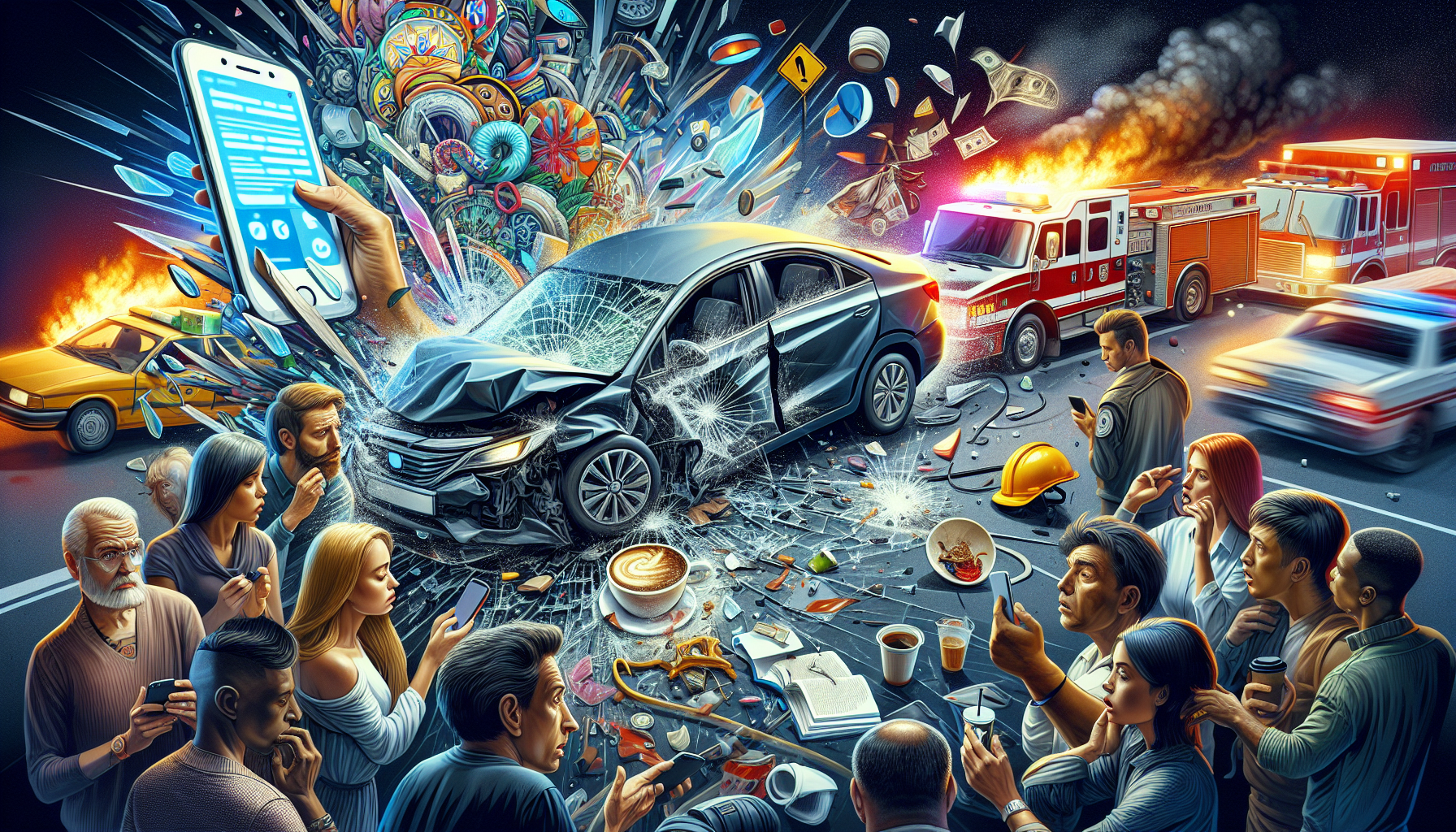
In 2022, distracted driving was responsible for 3,308 fatalities on U.S. roads. Rear-end collisions often occur with distracted driver due to slow reactions from distractions, leading to significant injuries. Two-thirds of motor vehicle fatalities are linked to driver distraction, underscoring the importance of addressing distracted driving crashes.
Drivers causing severe accidents while distracted could face charges like reckless driving or even vehicular manslaughter. They may also face civil liability, which includes compensating victims for various damages such as medical expenses and lost wages.
The severity of consequences for distracted driving can lead to criminal charges, ranging from misdemeanors to felonies, depending on the circumstances of the incident. Financial repercussions may encompass higher insurance rates, medical expenses, and lost income from work.
Tips to Avoid Distracted Driving
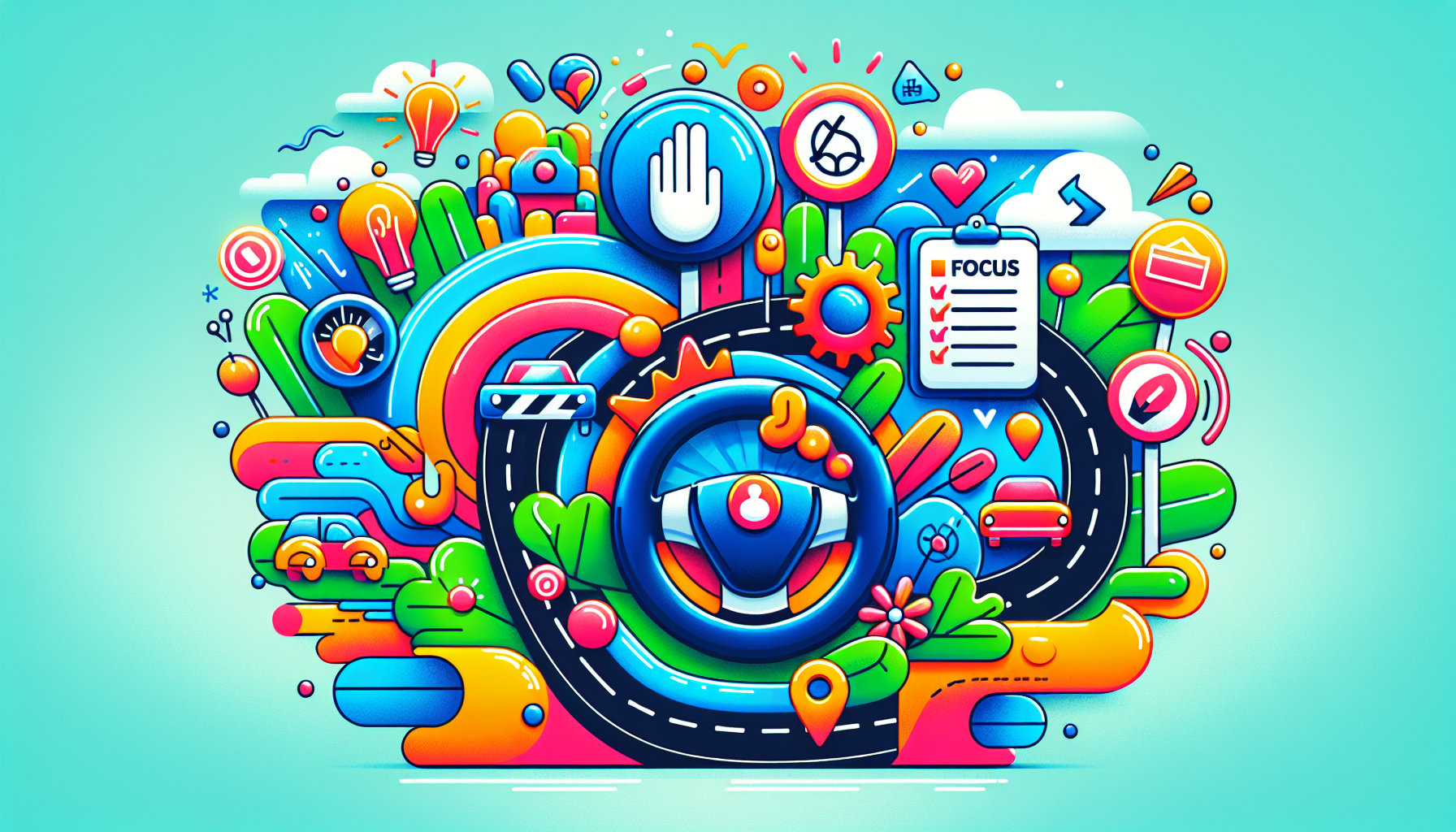
Maintain full attention on driving by actively scanning the road and staying aware of your surroundings. Secure loose items in the car to minimize the temptation to reach for them while driving. Keeping your cellphone out of reach while driving reduces distractions.
Establishing guidelines for passenger behavior can help maintain a distraction-free environment.
Prepare Before You Drive
Adjusting control knobs demands attention and can take hands off the wheel, leading to distractions. Complete all personal preparations for car itself, including adjusting controls and checking traffic routes, before starting to drive.
Managing tasks and setting up navigation before starting the car minimizes distractions before start driving. Adjusting all knobs before start driving also helps avoid unnecessary distractions during the journey.
Use Hands Free Devices Wisely
Using a hands free device helps maintain communication without compromising safety. Hands free device and-free technology enables communication without taking hands off the wheel.
Smartphone voice-to-text features allow drivers to send messages safely while staying focused on the road. Using voice commands for tasks like phone calls minimizes distractions while driving.
Legal Implications of Distracted Driving
Legal consequences for distracted driver encompass liability for property damage and injuries caused by distracted driving. Fines, points on license, and increased insurance premiums are three categories of common penalties for distracted driving.
In many states, it is illegal to use a phone behind the wheel, and texting while driving is explicitly prohibited. Distracted driving is considered a serious offense in Illinois. Awareness of legal implications helps drivers stay mindful of their actions and avoid distractions.
How Technology Can Help
Cell phone blocking technologies prevent drivers from using their phones, enhancing road safety. Advanced cell phone blocking systems can monitor vehicle speed and sudden stops, providing additional safety features.
A common misconception is that blocking devices hinder emergency calls, but they typically allow quick access to emergency services. Technology plays a key role in minimizing distractions, improving overall road safety.
Summary
Understanding and addressing three types of distracted driving is crucial for ensuring road safety. By recognizing the three main types of distractions—visual, cognitive, and manual—we can take proactive steps to reduce their impact on our driving. Visual distractions take our eyes off the road, cognitive or mental distractions divert our mind’s focus, and manual distractions involve taking our hands off the wheel. Each type poses a significant risk, but by being aware of these dangers, we can implement strategies to mitigate them.
The consequences of distracted driving are severe, ranging from increased accident rates to legal repercussions and financial costs. By following practical tips, such as preparing before driving and using hands-free devices wisely, we can minimize distractions and maintain full attention on the road. Embracing technology that helps block distractions can also play a significant role in enhancing road safety. Let’s commit to staying focused behind the wheel, for our safety and the safety of others.
Frequently Asked Questions
What are the three main types of distracted driving?
The three main types of distracted driving are visual distractions, which involve taking your eyes off the road; cognitive distractions, which divert your mental focus; and manual distractions, where you remove your hands from the steering wheel. Recognizing these three various types of distracted driving using can significantly enhance road safety.
How can cell phones contribute to distracted driving?
Cell phones contribute to distracted driving by diverting attention away from the road through activities like texting, social media use, and navigating with GPS. Consequently, this heightens the likelihood of accidents due to reduced focus on driving.
What are some common examples of manual distractions while driving?
Common manual distractions while driving include eating, talking, drinking, adjusting vehicle controls, and using electronic devices. It's essential to minimize these distractions to ensure your safety on the road.
What legal consequences can result from distracted driving?
Distracted driving can lead to serious legal consequences, including fines, license points, increased insurance premiums, and in severe cases, charges of reckless driving or vehicular manslaughter. It's crucial to remain focused while driving to avoid these outcomes.
How can technology help reduce distracted driving?
Technology can effectively reduce distracted driving by implementing cell phone blocking systems that prevent usage while driving and utilizing voice-to-text features for safer communication. This proactive approach enhances road safety and minimizes distractions.

